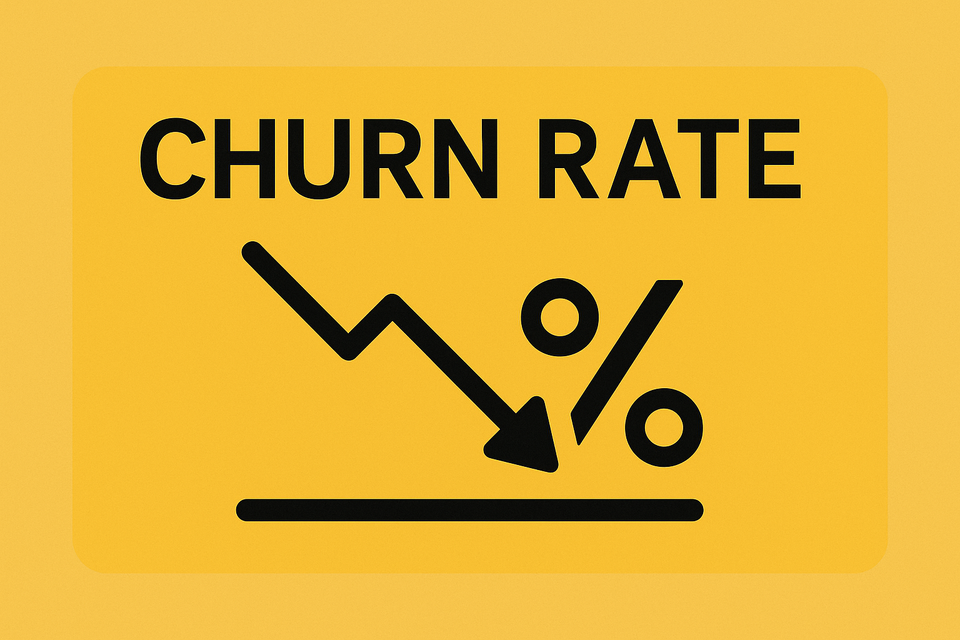What Is Churn Rate? How to Calculate and Reduce Customer Loss in SaaS

What is Churn Rate?
Churn rate is the percentage of customers who stop using your product or cancel their subscription during a given period. It's one of the most critical metrics in SaaS because it reflects customer satisfaction, product-market fit, and the effectiveness of your Customer Success strategy. A high churn rate can cripple growth — even if you're acquiring new customers at a steady pace.
Why does churn rate matter in SaaS?
Is my churn rate too high?
According to Chartmogul's benchmarks, the average monthly churn rate for SaaS companies is:
- 3–8% for B2C SaaS
- 1–3% monthly (12–36% annually) for B2B SaaS
Best-in-class B2B SaaS companies typically keep net churn under 1% monthly, especially in enterprise segments. Anything above 5% monthly churn is a red flag and suggests deeper retention issues.
How do you calculate churn rate?
The basic formula is:
Example: If you started the month with 500 customers and lost 25, your churn rate is:(25 ÷ 500) × 100 = 5%
You can also calculate revenue churn to understand the monetary impact — this is especially useful for companies with tiered pricing or upsells.
Why are customers churning?
Common causes of churn in SaaS include:
- Poor onboarding or slow time-to-value
- Lack of ongoing engagement or feature adoption
- Product not delivering enough ROI or solving the core problem
- Technical issues or poor support experience
- Budget cuts, team turnover, or contract misalignment
Customer Success teams should map churn reasons using both qualitative and quantitative data. At Customerscore.io, we use behavioral signals to help SaaS teams catch churn risks before it’s too late.
What are some proven strategies to reduce churn?
To reduce churn effectively, SaaS companies can:
- Implement a strong onboarding journey with milestone tracking
- Segment customers and tailor engagement based on needs
- Use customer health scores to trigger proactive outreach
- Schedule regular value reviews (QBRs, EBRs)
- Collect and act on feedback continuously
Tools like Customerscore.io help you monitor these activities in real time — from segmentation to upsell triggers to automated outreach playbooks.
FAQ
What is a good churn rate for SaaS?
For B2B SaaS, anything below 3% monthly churn is acceptable, while best-in-class companies aim for less than 1%. For B2C, under 5% is typical.
What’s the difference between churn rate and retention rate?
Retention rate shows how many customers you kept, while churn shows how many you lost. If churn is 5%, retention is 95%.
Should I track customer churn or revenue churn?
Ideally both. Customer churn shows volume lost, while revenue churn shows dollar impact. Losing a small customer and a major enterprise account are not equal.
How often should I calculate churn?
Most SaaS companies track churn monthly. However, for strategic accounts or enterprise CS, quarterly churn reviews may be more relevant.
Can churn ever be a good thing?
Yes — if you’re shedding unprofitable or poorly fitting customers and reinvesting in high-value segments, strategic churn can be healthy.
